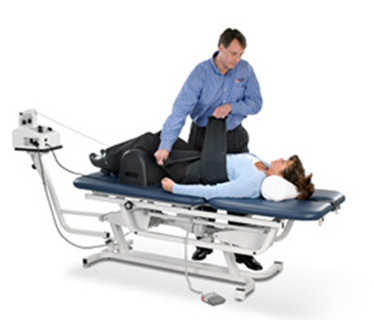Traction is the application, to the body of a manual or mechanical force to stretch and mobilize the muscles, ligaments, joints, and tissues of the spine. Traction can be performed on the cervical (neck) or lumbar (lower back) spine. The goals of spinal traction are to relieve pain, improve nutrition, stimulate joint fluid production, and increase range of motion.
Mechanical traction uses a variety of belts and halters and a number of different patient treatment positions to apply traction to different areas of the spine and to focus the effect on different segments of structures. Mechanical traction units can apply static or intermittent traction of varying force. The type and position of the traction treatment will be determined by the therapist after a full evaluation including review of any MRI’s or X-rays that are available and input from your physician.
Spinal traction may be a useful treatment for:
- Back and neck pain associated with radiculopathy and degenerative changes
- Herniated disc
- Osteoarthritis
- Nerve root compression
- Muscle tightness
- Joint stiffness
- Headaches
Note: Patients who exhibit symptoms of spinal instability, fracture, acute or traumatic injury, or any condition that may be made worse with movement are not candidates for spinal traction.


